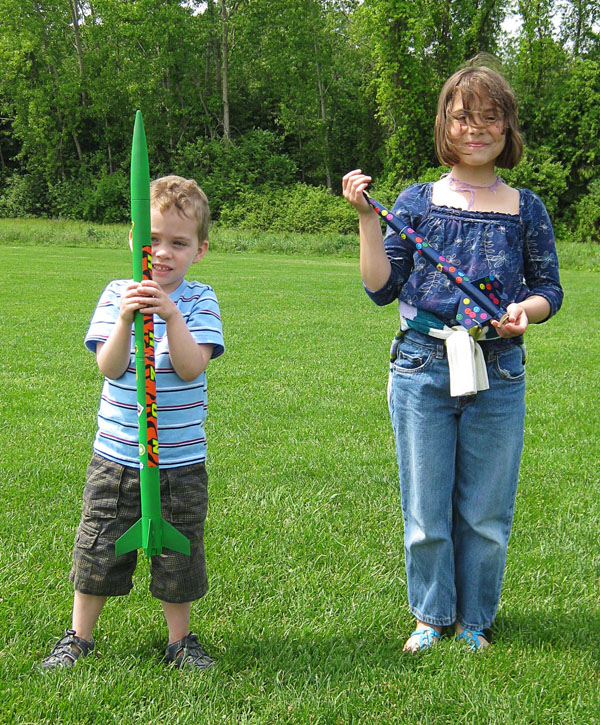On May 22nd my two kids (3 and 8 years old) launched their first rockets.
Matthew built an Estes Amazon and Miranda built an Estes Crossfire ISX.  I let them each pick out one spray paint color at the local hardware store.  Matthew picked a horrible florescent green, but once that was sprayed onto the black rocket, it turned into a decent green.  Miranda picked a super glossy dark blue.
I originally planned to let them draw on the rockets with markers, but the marker didn’t stick to the glossy blue. Â Even a Sharpie marker couldn’t touch it. Â So we tried model paint. Â That didn’t work out well either. Â The glossy blue was just too slippery. Â In the end I bought a bunch of stickers. Â The kids had a blast covering their rockets with stickers. Â Miranda just used a ton of smiley faces and named her rocket “Giggle Powered”. Â Matthew used various stickers plus the original Amazon sticker that came with the kit. Â He stuck with the name “Amazon”.
Matthew’s Amazon flew six times on Estes C6-5s without incident. Â Each flight was perfect with a nice slow lift-off and safe recovery. Â On one flight it landed in some tall grass and took a few minutes to find, but we found it easily.
Miranda’s Giggle Powered on the other hand had a much more adventurous day. Â The shock cord broke on the first flight. Â The body landed without any recovery system attached, but it bounced on the grass and survived without damage. Â I tied the shock cord together and it broke again on the second launch and the third. Â Before the next one I added a long section to the shock cord. That did the trick. Â This time it landed safely under the streamer.
TIP: Make your shock cord extra long. The longer it is the less stress you’ll place on the shock cord, body tube, and nose cone. If you are worried about it getting tangled,
crochet it. Although that video demonstrates the technique using a crochet needle, I’ve done it by hand without any issue. Also, if the shock cord is still too long you can crochet it a second time, but that is riskier so be careful to make sure it will unwind correctly and won’t snag.
The fifth launch went without incident as well. Â On the sixth launch it hit a wind gust and flew off course. Â It went well into the trees and I thought it was gone forever. Â I spent a while beating my way through the overgrowth and finally saw it hanging high in a tree. Â However, the guys running the launch had a 30 foot pole with a hook at the top. Â Using that I was able to bring the rocket back. Â Despite all the broken shock cords and a crash into the trees Giggle Powered survived the day.
Despite launching on Estes B4-4s instead of the C6-5s Giggle Powered was still very fast and flew very high. Following it with the camera was next to impossible.
Each kid now has their rocket hanging on their bedroom wall. Â They both enjoyed building and flying them. Â It was a great experience for all of us.
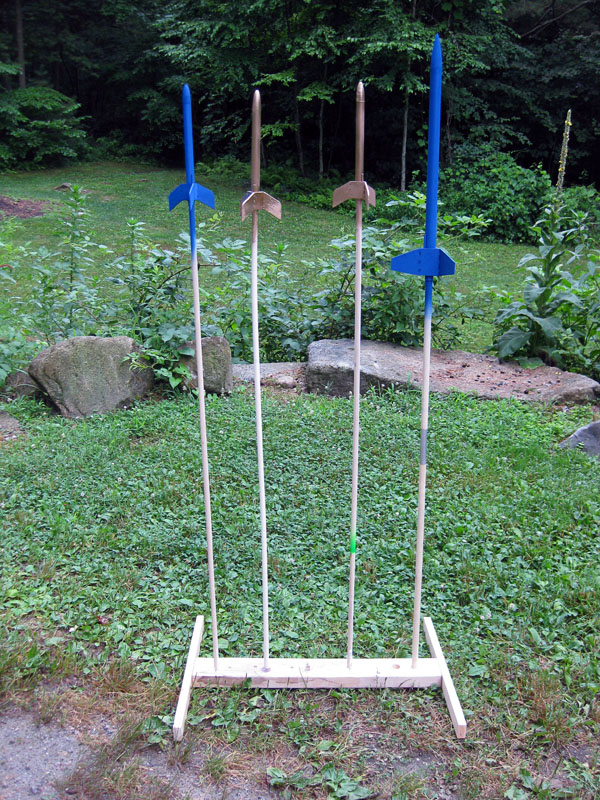
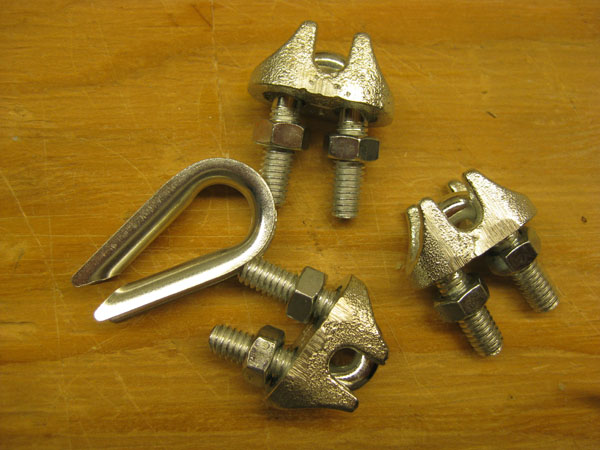
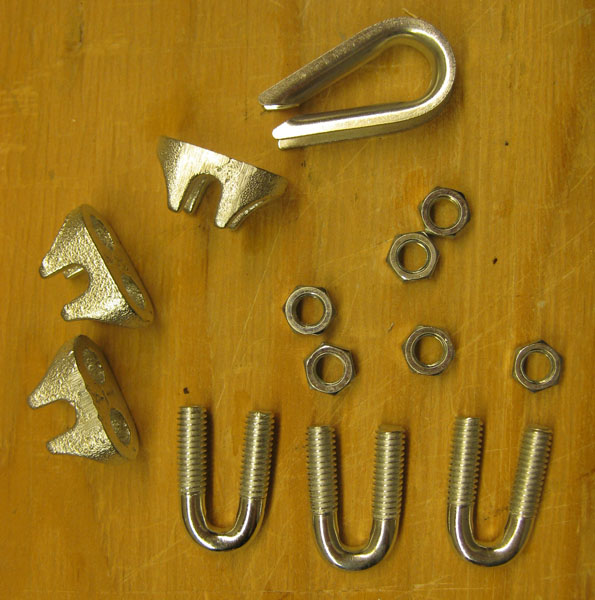
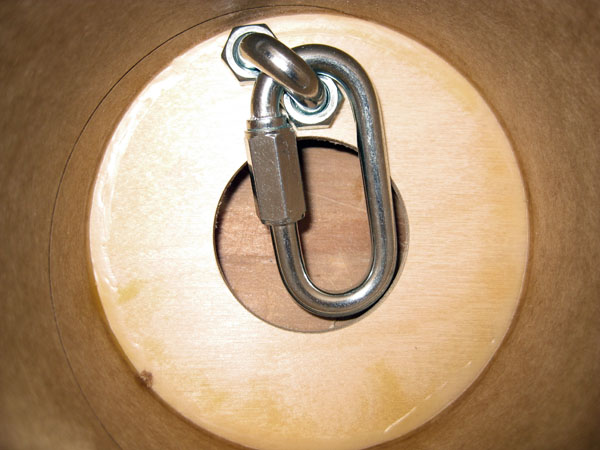
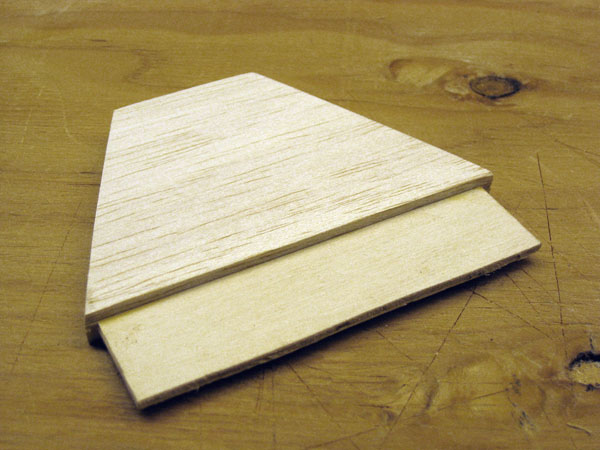
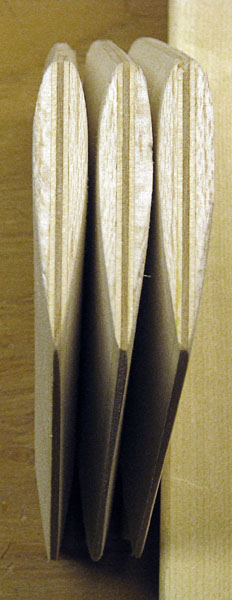 [In this photo only the leftmost fin is seen straight on. The others are seen at a bit of an angle. When viewed straight on they appear more uniform.]
[In this photo only the leftmost fin is seen straight on. The others are seen at a bit of an angle. When viewed straight on they appear more uniform.]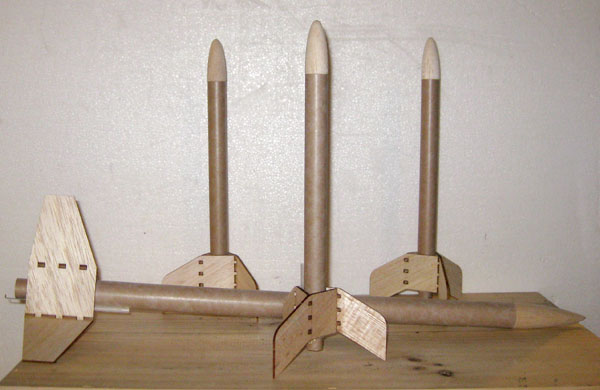 [Rockets built by Matthew, Miranda, and Miranda’s friends]
[Rockets built by Matthew, Miranda, and Miranda’s friends]